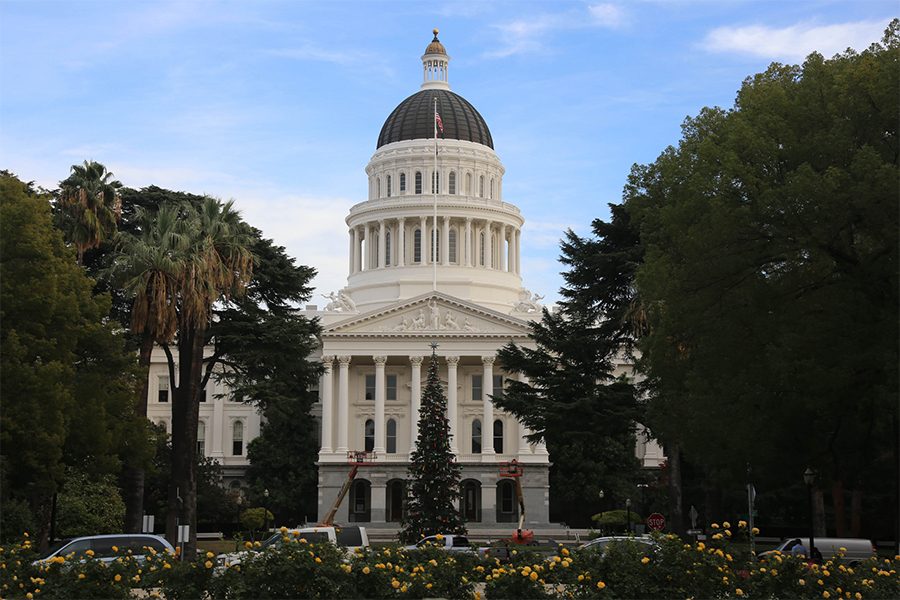On Wednesday, Gov. Newsom will unveil his much-anticipated 2024-25 state spending plan, officially kicking off the budget debate at the State Capitol.
While the state is facing a $68 billion shortfall according to the nonpartisan Legislative Analyst’s office, Newsom said in a December TV interview that, “we have different numbers and you’ll see them on January 10.”
Asked about his budget priorities, Newsom said in that same interview that his administration is “looking at what you would do in your home and your business, tightening your belts, reconciling some of this.”
Here are three things that I’m watching for this week in Newsom’s budget rollout and the immediate aftermath:
How much will the Rainy Day Fund reserve help with this year’s deficit?
Newsom has said that the state has “battened down the hatches in terms of a lot of reserves.”
This year’s budget is the first time when we can expect significant use of the state’s Rainy Day Fund budget reserve that was long a priority of fiscal conservatives and enacted in 2014.
In recent years, during times of growing revenue, the state has saved the maximum of about $22 billion in the reserve, some of which can be used in the 2024-25 budget. This will help soften the blow of potential cuts, but the state is limited in how much it can use from the reserve.
Under the language of the Rainy Day Fund law, Newsom can take out up to the amount needed for the budget emergency – but it cannot be more than half the money in the account if a fiscal emergency was not declared the prior year. This means about $11 billion from the reserve could be on the table in 2024-25.
Will Newsom’s recent budget priorities be spared from budget axe?
While speaking rhetorically about the importance of fiscal discipline, Gov. Newsom has certainly not budgeted as a fiscal conservative, growing total state spending under his watch from $214.7 billion in the enacted 2019-20 state budget to $310.8 billion in the 2023-24 enacted budget.
With the state facing a $68 billion budget shortfall and billions in COVID-19 relief funds running out, he’ll have no choice but to pare back some of his recent expansions in ongoing spending. This includes such programs as expanding eligibility for Medi-Cal coverage for undocumented immigrants aged 26 to 49, which is estimated to cost $2.6 billion annually, or the new state law raising the minimum wage for health care workers, which is expected to cost $4 billion this year alone. Newsom, however, has already rejected rolling back the undocumented Medi-Cal expansion, saying he was “committed to it” but is calling for “major changes” to the health care minimum wage law.
The deficit will inevitably force his hand here, but will the changes be program reforms to permanently reduce costs or delaying program implementation to the future in the hopes of rosier revenue in the years ahead?
How do legislative liberals respond?
Last year, in response to a much calmer budget picture, Senate Democrats proposed an alternative spending plan to “protect our progress,” which included a $7.2 billion tax hike, $10 billion in new infrastructure spending, and a combined $18 billion in fund shifts and spending delays. If this was their response in 2023, expect liberal lawmakers to howl in protest at whatever Newsom proposes to close a massive deficit, even if he embraces a budget filed with gimmicks. They’ll surely push for the same type of tax increases and overspending in the 2024-25 budget, but Newsom has already ruled this out.
Fortunately for Newsom, there’s been a changeover in the Senate and Assembly leadership. Asm. Robert Rivas (D-Hollister) is entering his first full year as Assembly Speaker, while Sen. Mike McGuire will become Senate President Pro Tem on Feb. 5. Both are liberals who are pragmatic dealmakers. Expect them to work closely with Newsom but watching over their left shoulders. Growing angst from liberal legislators such as the new “End Poverty in California” caucus clamoring for higher taxes and spending could force them to push back more than anticipated on Newsom’s spending plans.
Tim Anaya is the Pacific Research Institute’s vice president of marketing and communications.


